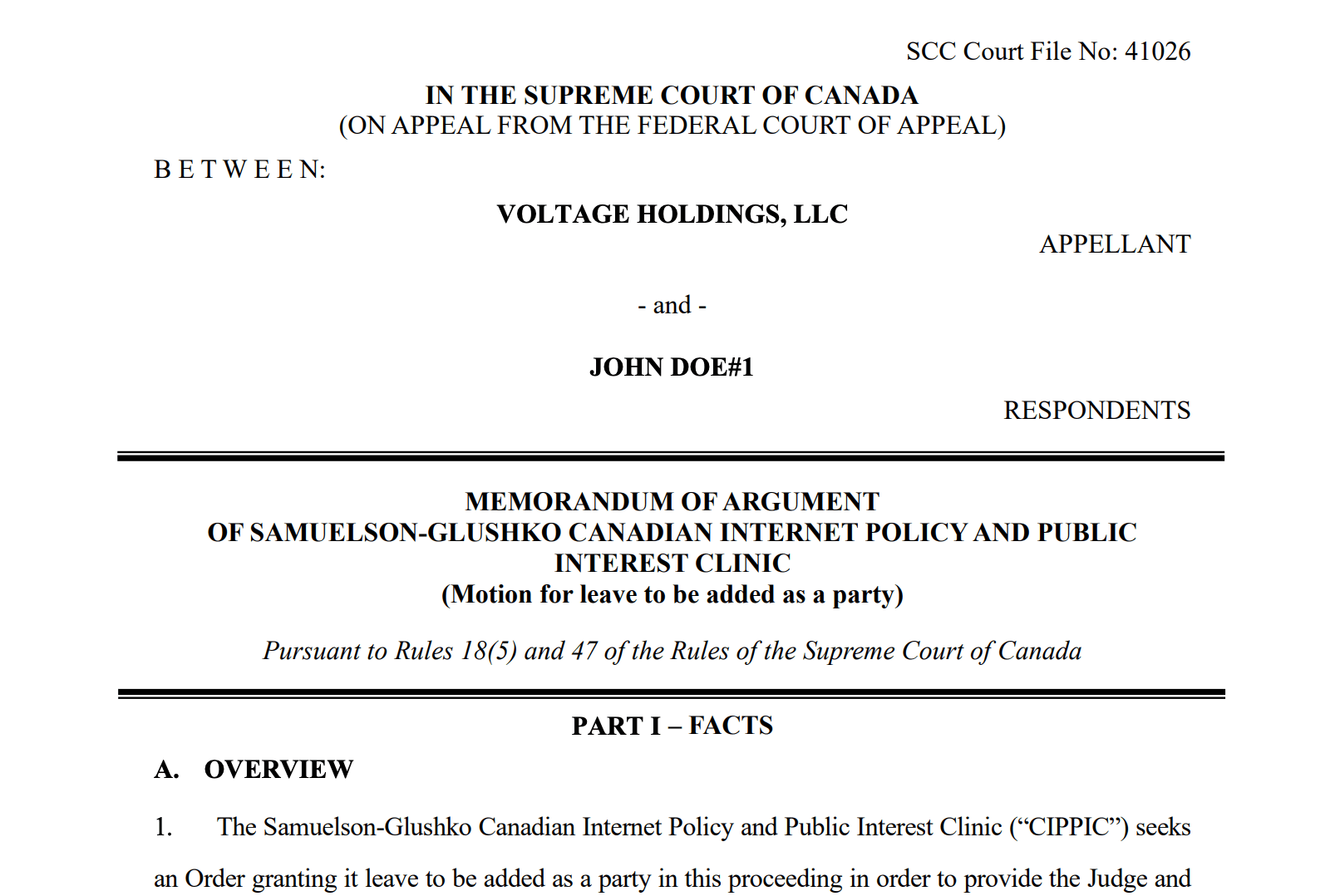Broadcast Flag
The Canadian Government is considering importing an American-style broadcast flag regulatory regime. CIPPIC is greatly concerned with the implications of this development.
Will Canada Salute the Broadcast Flag?
The Canadian Government is considering importing an American-style broadcast flag regulatory regime. CIPPIC is greatly concerned with the implications of this development.
The Broadcast Flag - What's it All About?
The broadcast flag is a Digital Rights Management (DRM) system for controlling consumer treatment of high-definition television (HDTV) broadcast content. The Federal Communications Commission (FCC) in the United States, through its rule-making authority, has recently implemented a broadcast flag regime. The American broadcast flag regime comprises three essential elements. First, the flag itself is simply machine readable data inserted into digital television ("DTV") signals which contain instructions for the treatment of DTV content. Second, the flag requires a "reader" on receiver equipment. The reader reads the flag and permits the receiver to distribute content - or not, according to the flag's instructions - to only those components of a home entertainment network that are "compliant", or that also contain the flag's DRM, and so "honour" the flag. Third, the broadcast flag requires a regime to regulate broadcast signal receiver equipment. Under this regulation, anyone wishing to manufacture or sell DTV receiving equipment must:
- apply for regulatory approval and
- incorporate government-approved ("compliant") flag reader technology. The regulatory approval process offers ample opportunity for content owners - primarily the major American motion pictures studios - to oppose or request modifications to new technology.
Ostensibly, the broadcast flag addresses the unauthorized distribution of content through peer-to-peer networks and other uncontrolled technology. In reality, the flag offers relatively weak protection against piracy - its own supporters call it a "speed bump". The true benefit the broadcast flag offers content owners is a mechanism for controlling the functionality downstream innovators may incorporate in new gadgets and gizmos. In the past, Hollywood has been forced to react after-the-fact to adapt their business models to technological innovations. Colour television, the VCR, and personal video recorders (like TiVo) all caught the content industry unprepared. The broadcast flag offers the content industry the opportunity to force consumer electronics innovators to conform to the content industry's business models. At bottom, the broadcast flag represents an attack on the open architecture of home entertainment systems to accommodate Hollywood's preferred business models. CIPPIC opposes the adoption of a broadcast flag regulatory model in Canada - or anywhere else, for that matter. In CIPPIC's view, adoption of the broadcast flag raises concerns in four areas:
- Innovation Undermined - The history of the content industry is one of adaptation to disruptive technologies. While some businesses lose and others gain at the introduction of disruptive technologies, without exception, consumers benefit from the choice, inventiveness and efficiencies offered by disruptive technologies. Accordingly, one would expect that the government should support policies which preserve scope for innovation. Simply, disruptive technologies favour the public interest. In contrast, the broadcast flag favours private interests. The broadcast flag places control over potentially disruptive technology in the hands of those whose business models are least adapted to exploiting the technology.
- Consumer Rights - A DTV receiver that honours the broadcast flag will not communicate flagged content with legacy electronics equipment that does not itself honour the flag. The broadcast flag accordingly means three things for consumers. First, consumers will lose functionality as they purchase and install electronics receiver equipment that honour the flag. Simply, the flag, by definition, restricts what a consumer may do with an HDTV signal. Second, consumers will face the cost of purchasing replacement equipment. If your DVD-burner no longer works with your home theatre receiver, you will have no choice but to purchase a new burner that contains the flag's DRM. Third, all consumers will lose in the long run from a regulatory environment that undermines innovation.
- Copyright's Balance Irrelevant - As with all Digital Rights Management (DRM) systems, the broadcast flag sets aside copyright's bargain between content owners and content users in favour of technological controls over the permissible uses of content. Copyright law, by design, reserves a sphere of activity for users that lies beyond the reach of copyright owners. For example, under Canadian law, one may record television programs for time-shifting purposes, or for private study or research. The broadcast flag and similar DRM systems set aside those rights unconditionally in favour of terms dictated by the content owner. Those terms naturally favour the content owner's interests - private interests. Copyright policy's concerns for the public interest - in innovation and creativity, in private enjoyment of intellectual works, in access and dissemination of creative works - merit no consideration under a broadcast flag regime.
- Shifting the Burden of Protecting Content - Government technology mandates like the broadcast flag shift the cost of protecting content from the content industry to consumer electronics manufacturers and, ultimately, to consumers. The most logical means of protecting content is through encryption at source; after all, content providers are best placed to protect content, and have the greatest incentive to do so. Those same considerations dictate that the content provider should bear the costs of protection. The broadcast flag mandates protection through regulation of hardware and software. Content providers get the benefit of this protection for free, while passing on the costs to consumer electronics manufacturers - who have to redesign technology to accommodate the flag - and consumers, who will bear the substantial cost of replacing legacy equipment.
What are the Canadian government’s plans for the broadcast flag? In his 2004 Annual Report to the General Council, the Director General, Spectrum Engineering, included work on a standard for "recognition of the broadcast flag" among Industry Canada's "Key Activities and Priorities" for 2005. This would have established technical standards for implementation of broadcast flag recognition technology on DTV reception equipment in Canada. It would not have amounted to a technology mandate. However, following interventions by CIPPIC, among others, Industry Canada has taken a “wait and see” position: it will monitor developments in the US prior to taking any action on the flag. Spectrum Engineering has accordingly taken broadcast flag technical standards off the agenda for the time being. If the current implementation of the U.S. broadcast flag regime survives legal challenge, the Canadian government will likely hold a consultation process. Consumers and electronics technology innovators should participate in this process. Check back to the CIPPIC website for updates.
- Need more information? Look at our Broadcast Flag FAQs.
- The United States is scheduled to adopt the Broadcast Flag in June, 2005. The process has not been smooth: a chronology.
- Links to further resources.



